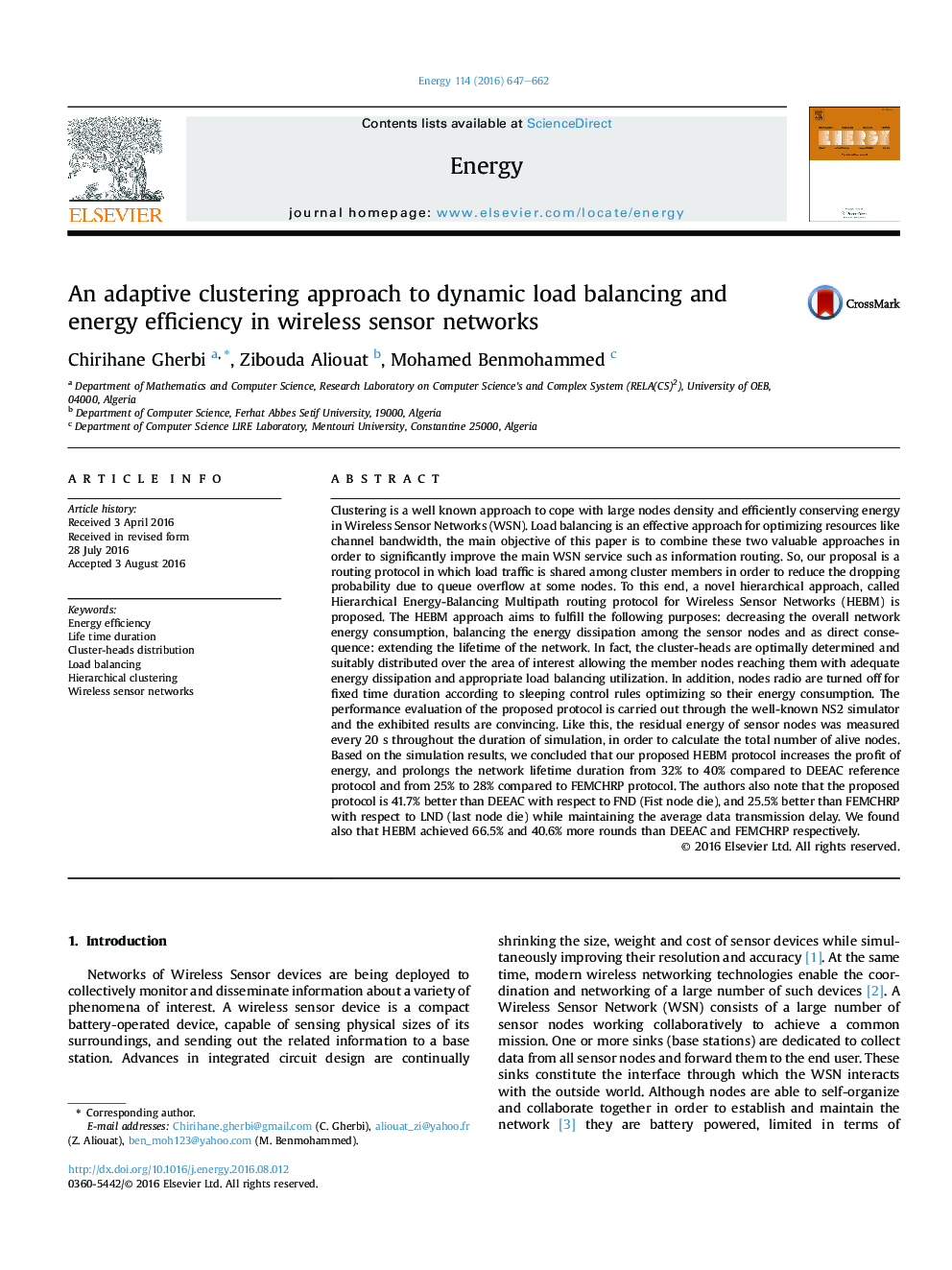| Article ID | Journal | Published Year | Pages | File Type |
|---|---|---|---|---|
| 8072875 | Energy | 2016 | 16 Pages |
Abstract
Clustering is a well known approach to cope with large nodes density and efficiently conserving energy in Wireless Sensor Networks (WSN). Load balancing is an effective approach for optimizing resources like channel bandwidth, the main objective of this paper is to combine these two valuable approaches in order to significantly improve the main WSN service such as information routing. So, our proposal is a routing protocol in which load traffic is shared among cluster members in order to reduce the dropping probability due to queue overflow at some nodes. To this end, a novel hierarchical approach, called Hierarchical Energy-Balancing Multipath routing protocol for Wireless Sensor Networks (HEBM) is proposed. The HEBM approach aims to fulfill the following purposes: decreasing the overall network energy consumption, balancing the energy dissipation among the sensor nodes and as direct consequence: extending the lifetime of the network. In fact, the cluster-heads are optimally determined and suitably distributed over the area of interest allowing the member nodes reaching them with adequate energy dissipation and appropriate load balancing utilization. In addition, nodes radio are turned off for fixed time duration according to sleeping control rules optimizing so their energy consumption. The performance evaluation of the proposed protocol is carried out through the well-known NS2 simulator and the exhibited results are convincing. Like this, the residual energy of sensor nodes was measured every 20Â s throughout the duration of simulation, in order to calculate the total number of alive nodes. Based on the simulation results, we concluded that our proposed HEBM protocol increases the profit of energy, and prolongs the network lifetime duration from 32% to 40% compared to DEEAC reference protocol and from 25% to 28% compared to FEMCHRP protocol. The authors also note that the proposed protocol is 41.7% better than DEEAC with respect to FND (Fist node die), and 25.5% better than FEMCHRP with respect to LND (last node die) while maintaining the average data transmission delay. We found also that HEBM achieved 66.5% and 40.6% more rounds than DEEAC and FEMCHRP respectively.
Related Topics
Physical Sciences and Engineering
Energy
Energy (General)
Authors
Chirihane Gherbi, Zibouda Aliouat, Mohamed Benmohammed,
